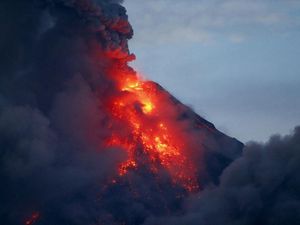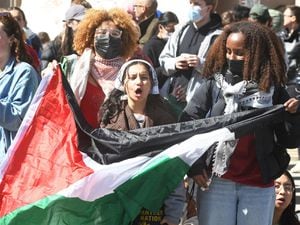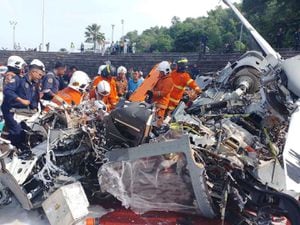Residents flee as lava flows from Philippine volcano
At least 56,000 people have taken shelter in 46 evacuation camps.

Lava spraying from the Philippines’ most active volcano has flowed almost two miles from the crater in an increasingly dangerous eruption.
Mount Mayon has spewed lava up to 2,000ft high and its ash plumes stretched up to three miles above the crater.
Lava flows in two gullies had advanced down the volcano’s slopes more than half a mile and pyroclastic flows — superheated gas and volcanic debris — had spread three miles from the crater in one area, the Philippine Institute of Volcanology and Seismology said.
Authorities on Monday expanded the no-go zone to five miles from the crater and have warned a violent eruption may occur in hours or days, characterised by more rumblings and pyroclastic flows that will vaporise everything in their path.
At least 56,000 people were taking shelter in 46 evacuation camps and army troops and police were helping others leave the danger zone.
Authorities struggled to prevent villagers from sneaking back to check on their homes and farms and to watch a popular cockfight in Albay’s Santo Domingo town, despite the risks and police patrols and checkpoints.

“If pyroclastic flows hit people, there is no chance for life,” Mr Daep said.
“Let us not violate the natural law, avoid the prohibited zone, because if you violate, the punishment is the death penalty.”
Volcanic ash has darkened the skies over nearby villages in coconut-growing Albay province.

Mayon has long been popular with climbers and tourists but has erupted about 50 times in the last 500 years, sometimes violently.
In 2013, an ash eruption killed five climbers who had ventured near the summit despite warnings.
Its most destructive eruption, in 1814, killed more than 1,200 people and buried the town of Cagsawa in volcanic mud.
The belfry of Cagsawa’s stone church still juts from the ground in an eerie reminder of Mayon’s power.
The Philippines, which has about 22 active volcanoes, lies in the “Ring of Fire”, a line of seismic faults surrounding the Pacific Ocean where earthquakes and volcanic activity are common.





